What is Classical Apologetics
I’m going to use an illustration to explain Classical Apologetics. And if you can get this illustration, I really think that you can understand what took me years to figure out in seminary.
Classical Apologetics Uses 2 Steps
Let’s imagine this bubble is Classical Apologetics:
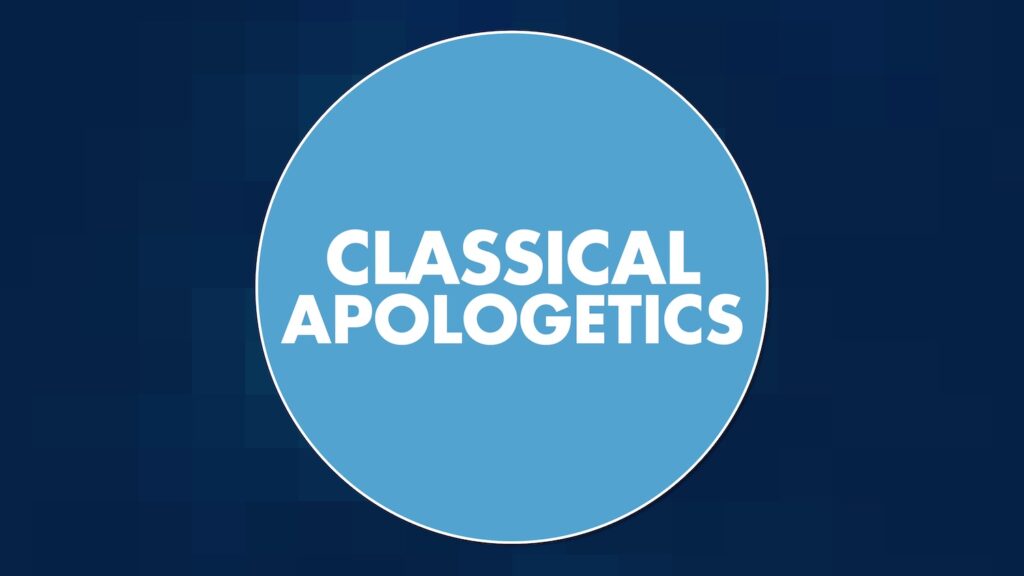 And then inside of it, you have two more bubbles. The first bubble is Rational Apologetics and the second is Evidential Apologetics:
And then inside of it, you have two more bubbles. The first bubble is Rational Apologetics and the second is Evidential Apologetics:
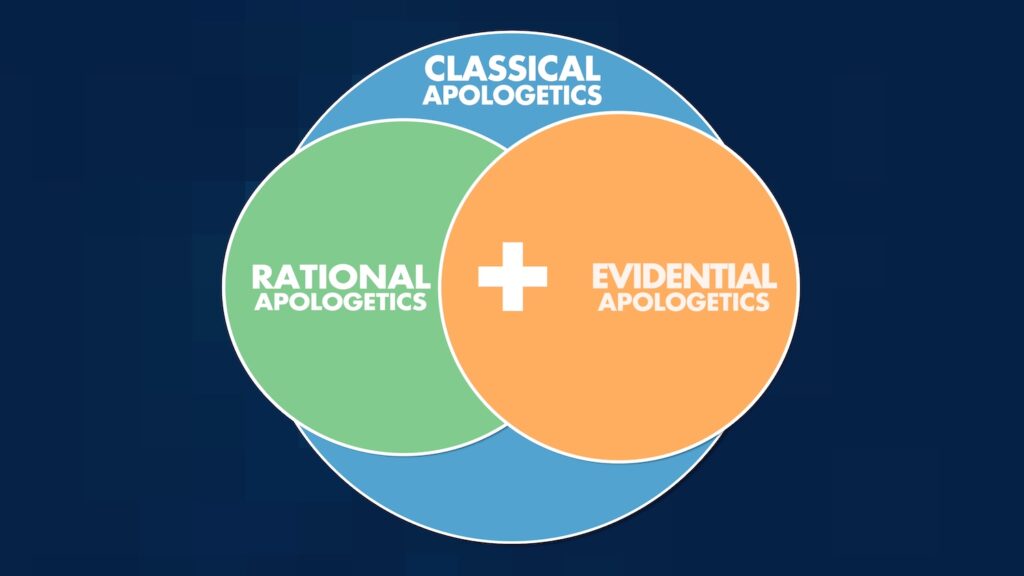 These two bubbles are the two steps of Classical Apologetics.
These two bubbles are the two steps of Classical Apologetics.
If we could learn what each of these steps are, we’d have a pretty good grasp of what Classical Apologetics is.
Step 1. Rational Apologetics
Let’s take a look at the first bubble called Rational apologetics.
A person uses Rational Apologetics when they try to prove that God exists using logic, reason, or philosophy. So let’s put these words in the bubble. And the arguments in Rational apologetics are usually put in what’s called formal proofs. So let’s also put that in there too:
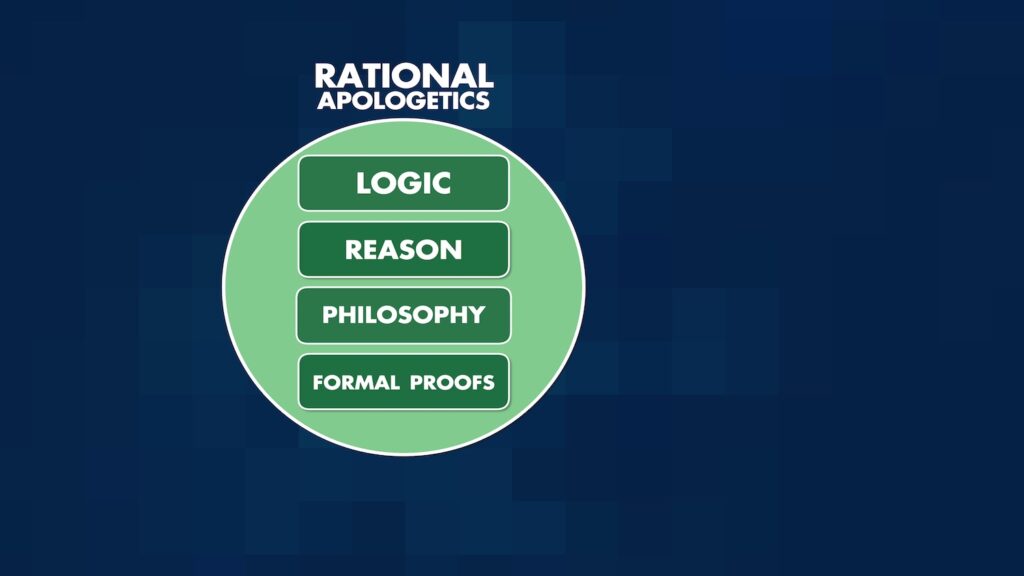 Now what do I mean by arguments? If you’ve ever heard of the cosmological argument for God, or the ontological, moral or teleological arguments for God, this is what I’m talking about.
Now what do I mean by arguments? If you’ve ever heard of the cosmological argument for God, or the ontological, moral or teleological arguments for God, this is what I’m talking about.
Let’s look at an example.
Here’s a cosmological argument for God:
Everything that had a beginning had a cause. The universe had a beginning. Therefore, the universe had a cause.
The idea is there must be an originating cause of the universe, and this must be God.
Here’s a moral argument for God:
Moral law implies a moral lawgiver. There is an objective moral law. Therefore, there is an objective moral lawgiver.
The idea is that this moral lawgiver is God.
There are many different kinds of arguments like this. And you really need to carefully think through each premise to see how they arrive at their conclusion.
It involves a lot of using your mind, concentrating, thinking through logic and whether the arguments are sound–that kind of thing. This is why these kinds of arguments are called rational arguments for God. And this is why the first bubble is called Rational Apologetics.
Step 2. Evidential Apologetics
The second bubble is Evidential Apologetics. And this is the second step for Classical Apologetics.
The second step is proving Jesus’s resurrection–along with His life, death and burial.
Now, it does this by looking at historical evidence, archaeological evidence, evidence from fulfilled prophecy–that kind of thing.
So we can fill in this bubble with things like history, archaeology, Bible accuracy, prophecy, etc.:
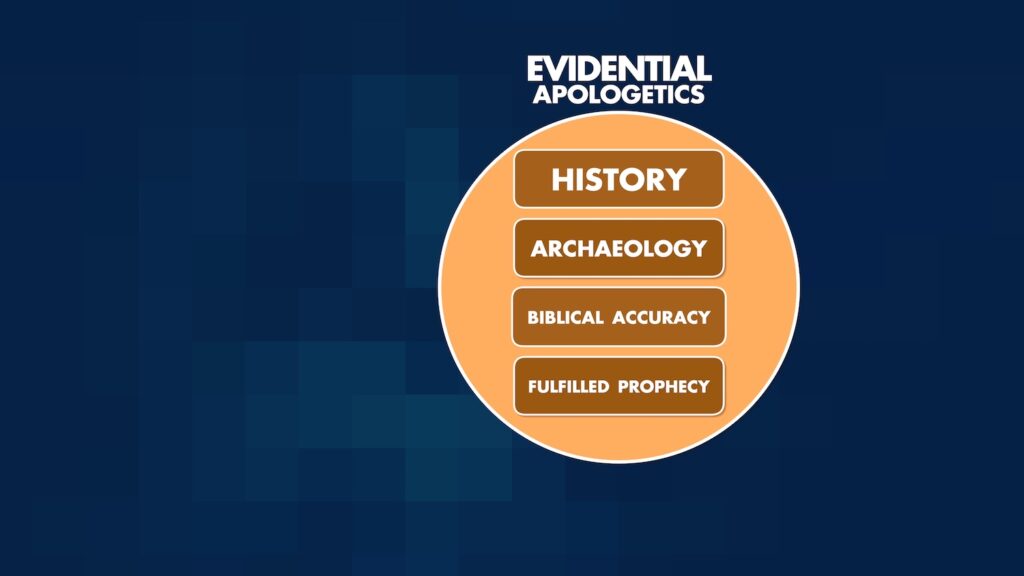 A really good example of evidentialism is Lee Strobel’s book and movie called The Case for Christ. It’s his personal story about how he tried to disprove Christianity as a reporter. But the evidence actually led him to become a Christian.
A really good example of evidentialism is Lee Strobel’s book and movie called The Case for Christ. It’s his personal story about how he tried to disprove Christianity as a reporter. But the evidence actually led him to become a Christian.
Conclusion
That’s basically Classical Apologetics. The first step is to prove that God exists using Rational Apologetics. And the second step is to prove Jesus’s resurrection through the evidence.
That’s the three minute explanation right there. But here are some more advanced thoughts below.
Advanced Thoughts
There’s a few more ways that we can look at these two different bubbles.
Reason + Evidence
Since rational apologetics is basically reason, it’s ok just to call it that. So we can call it reason, and the second bubble we can call evidence:
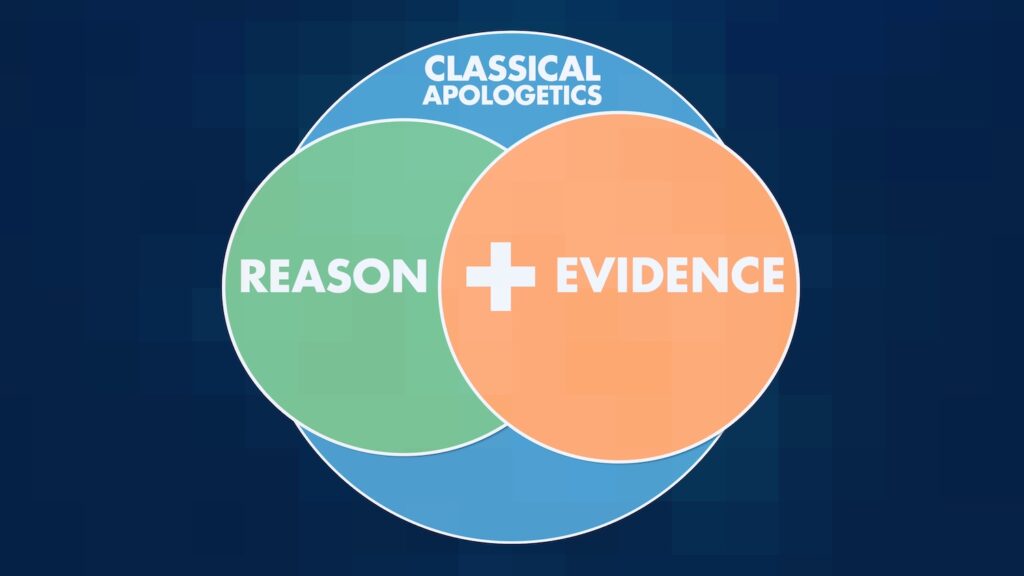 This might be an easier way to think of Classical Apologetics. It’s half arguments from reason and half from evidence.
This might be an easier way to think of Classical Apologetics. It’s half arguments from reason and half from evidence.
Classical Apologetics says we should use reason and evidence to try to prove Christianity–even to unbelievers.
But not all apologetics teach this. In fact, some (like Reformed Epistemology) say that, because of the fall, people are too corrupt to come to the truth through reason and evidence. So this is one way that Classical Apologetics stands out–because it says that these are both good and both should be used.
Deduction + Induction
A second way we can label these bubbles is deduction and induction:
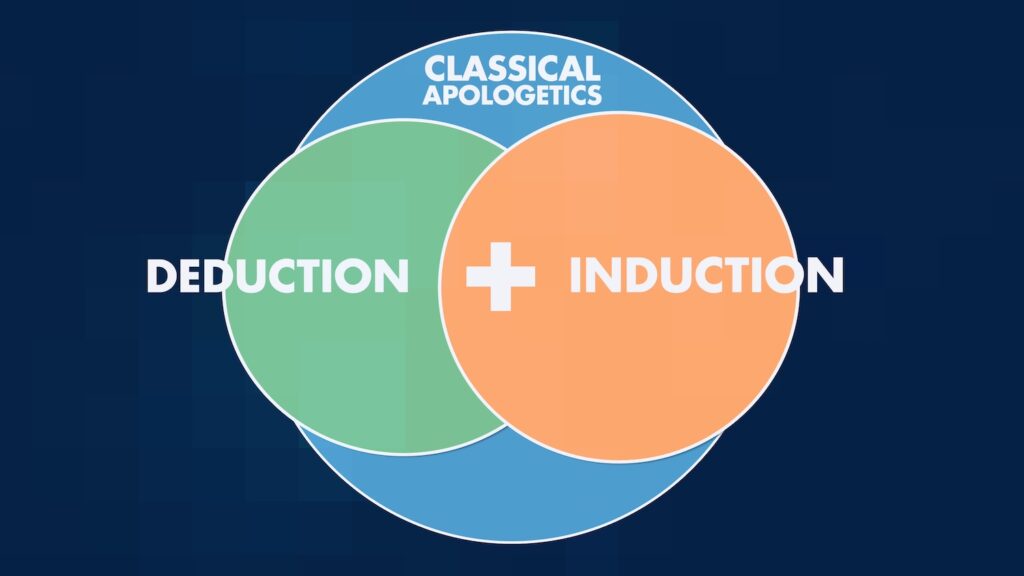 Deduction is when you start with an axiom or premise and move to particulars. This is what philosophers usually do.
Deduction is when you start with an axiom or premise and move to particulars. This is what philosophers usually do.
Induction is when you start with particulars and move to a conclusion. This is what scientists do.
So Classical Apologetics uses arguments from deduction, or philosophy, and arguments from induction or science. It uses both.
A Priori + A Posteriori
The last way we can label these bubbles is with some Latin words: a priori and a posteriori.
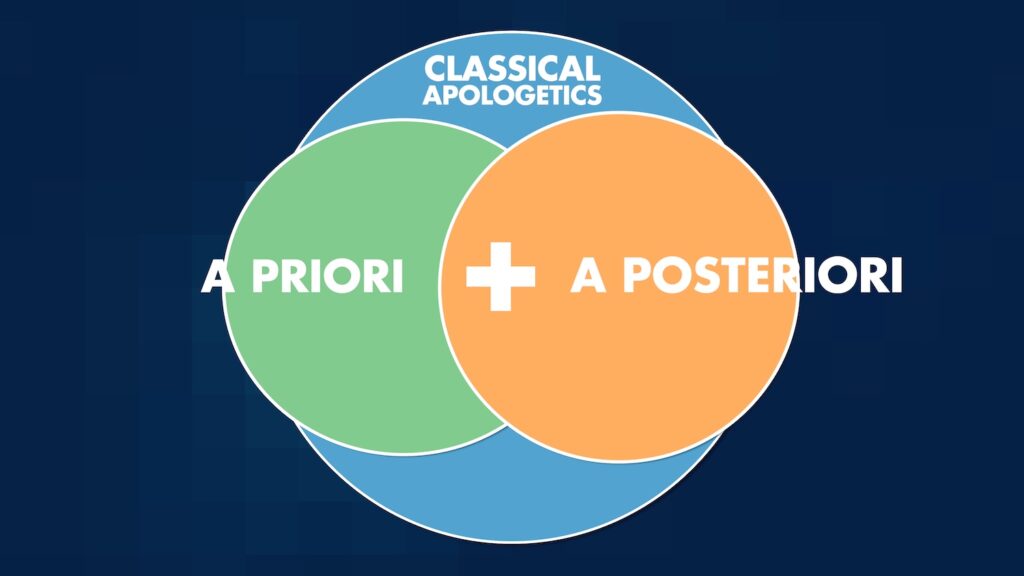 A priori is what we can know before experience. It’s just using our minds–before we go out and observe the outside world.
A priori is what we can know before experience. It’s just using our minds–before we go out and observe the outside world.
A posteriori is what we know after experience–after we observe the outside world.
Now if you’ve studied philosophy, you know that there’s been a raging debate between these two philosophical schools of thought. But Classical Apologetics says that both are useful.
Now I know that this last part was really deep. But if you get everything I just said, you’re well on your way to understanding what the big deal is about this apologetic approach.
Remember, it’s two steps–basically two different apologetics added together to make a third much bigger apologetic.
How Classical Apologetics Ranked on my Assessment
Finally, this was the highest ranking apologetic on my apologetics questionnaire for what keeps a person convinced Christianity is true. It came in towards the top for 57% of those surveyed.
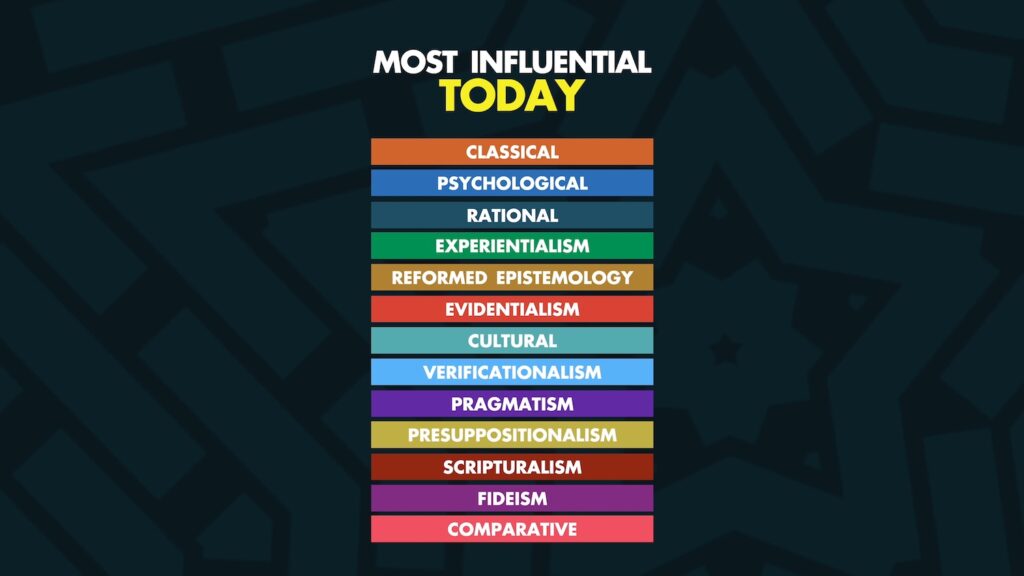 In other words, more than half of those surveyed continue to believe Christianity is true by the arguments from Classical Apologetics. So this is what makes this apologetic approach a very important topic to know about and study.
In other words, more than half of those surveyed continue to believe Christianity is true by the arguments from Classical Apologetics. So this is what makes this apologetic approach a very important topic to know about and study.
